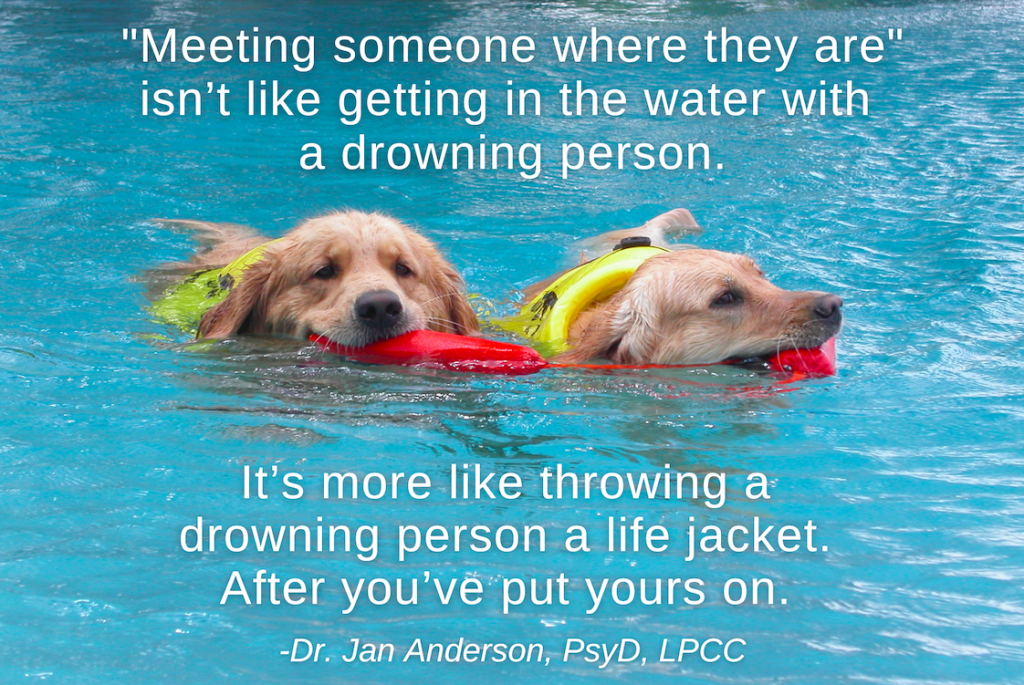Thinking about suicide is not a very good predictor of a suicide attempt. Thinking about suicide isn’t even one of the eight big risk factors for a suicide attempt.
Why? Because so many people think about it.
Does that mean we shouldn’t take what psychologists call “suicidal ideation” very seriously? Hardly.
Clinicians like me are now required to take a refresher course on suicide assessment and intervention every three years. Suicide is a major national public health issue in every state, with Montana having the highest rate, New York the lowest, and Kentucky right at the midpoint. And the yearly increases since 2017 show no sign of slowing.
Just because thinking about killing yourself isn’t unusual doesn’t mean everyone goes around constantly thinking about it.
Thinking about suicide is something that many sane, normal human beings do when we’re hurting. It’s a condition that arises, in part, from normal human suffering.
-
- Mental constriction and problem-solving impairment caused by severe mental strain don’t mean you’re abnormal or crazy.
- It means you’re human.
- Humans are vulnerable to stress.
- Sometimes humans get so stressed and so vulnerable that we need a helping hand to get through it.
When are the times in your life when you’ve thought about suicide? For most of us, it’s when things are really, really bad, you feel helpless about fixing it and hopeless that it will ever get better.
Thinking about killing yourself doesn’t mean you’re mentally ill. It means you’re in distress.

Constricted thinking limits your options… and reasons for living.
The problem is when you start thinking the only option is to off yourself.
“Constricted thinking” doesn’t make sense to the people around a person thinking about suicide. They often respond by trying to reason with the person and are confounded when it doesn’t work.
Trying to talk someone out of “Everybody would better off if I was dead” is about as effective as trying to reason with a person who’s drunk or high. Instead of being the heavy or the expert, trying to make my client stop thinking suicidal thoughts, my first task as a clinician is to meet them where they are.
How do you do that when you’re desperately afraid your client, friend, loved one or business associate might kill themselves? We’re frantic to get them to see it our way — that there are other options, that there are reasons for living.
In other words, you’re also experiencing your own mental and emotional strain. And without realizing it, you may be making things worse.
Meeting them where they are isn’t like getting in the water with a drowning person.
It’s more like throwing a drowning person a life jacket. After you’ve put yours on.

What happened when I called the suicide hotline.
One of the most powerful protective factors in reducing the risk of suicide is connection with others, so naturally, that includes the counselor-client relationship.
Being a psychology nerd, I naturally look for ways to understand on a visceral, experiential level what it feels like to be in my clients’ shoes.
Life often gives me those opportunities without my permission or my seeking them out, but one lazy Saturday afternoon several years ago I decided to see what happens when you call the local suicide hotline.
It wasn’t what I expecting.
After a few rings, upbeat music and a standard recording greeted me — “All of our operators are busy, but please hold and your call will be answered in the order that it is received.” I then found myself in a Muzak queue, no different from when I might order a pizza or a pair of shoes.
After almost ten surreal minutes of easy listening music, a helpful person eventually answered. (BTW: I called again while writing this article and a live, helpful person answered within three rings.)
These days, I could have texted HELP to 741-741. Starting sometime in 2021, simply dialing 988 will connect Americans to a local crisis counselor.
Connection is more important than technique.
Although being grounded in good clinical training and experience are extremely important, the connection between therapist and client is even more crucial than technique — especially in the beginning.
Until a person thinking about suicide knows I get him or her, they’re unlikely to think that I can help him or her.
The science behind this is pretty simple. The first area of the brain to activate when we encounter another person is instinctual and unconscious. It’s wired to look for cues about danger and responds reflexively, before rational thought. Once that part of the brain senses we’re safe, we naturally relax enough to be rational. The logical, problem-solving part of the brain can now come online and start functioning.

Connection can make collaboration possible.
If I’m able to make that crucial connection with my client, I may now be able to function as a collaborator. How do we work together to keep you safe from your own impulses? How do we deescalate when suicidal feelings come up?
To pull it off requires what I think of as skills in internal negotiation, shuttle diplomacy, and conflict resolution. What do I mean by this?
There’s often an internal conflict going on inside a person contemplating suicide. One part of them wants to live. On some level, that part of my client is searching for what psychologist Marsha Linehan calls a Reason for Living (RFL), but hasn’t been able to find one and feels hopeless about it.
Reasons for Living buffer and usually protect us from suicidal intent. If I can make contact with the part of my client who’s looking for a reason to live, I know there’s a chance of collaborating on a safety plan and a treatment plan.
Here’s the counterintuitive part: I first have to make contact with the part of the person who doesn’t want to live, who sees killing themselves as the only way to end the suffering. Here’s what I mean.
“I’m her Inner Critic and I am going to kill her.”
Several years ago, a woman contacted me who heard that I do a lot of “Inner Critic” work based on my training with Drs. Hal and Sidra Stone. She had researched the topic enough to know that the Inner Critic part of our personality is associated with depression and suicide. When she contacted me she said, “I think I have an Inner Critic that is trying to kill me.”
At first glance, this resilient and resourceful lady didn’t seem a likely candidate for suicide. Originally a stay-at-home mom, she had managed to raise her children on her own after her husband left them. She eventually ended up running a successful business in her home state.
However, in the past six months, she had been in a near-critical car accident and had also badly burned herself in a kitchen fire. I sensed this lady had plenty of psychological insight to know what she was talking about, so eventually, I asked her if it was possible to talk directly to her Inner Critic.
Without hesitation, she pulled her chair up close to mine, leaned in about 18 inches from my face, and said, “I don’t mean to scare you, but I am her Inner Critic and I am going to kill her.”
I swallowed hard, looked straight at her, and somehow managed to reply, “I’m sure you have very good reasons why you feel a need to kill her. Do you mind telling me what they are?”
Afterward, it occurred to me, “The foundation of my mindfulness practice is no judgment. When we say no judgment, we mean it. I guess that applies even to an Inner Critic.”
No judgment is what makes people feel safe with us, open up to us, and let us help them explore options and find solutions.
How do I know this? Because I’ve learned that our Inner Critic’s underlying motivation isn’t malevolence, contempt, or disgust. It’s anxiety. Our Inner Critic is desperately and often frantically trying to help us. But it’s stuck in old habit loops — like perfectionism, overwork, and enabling— and outdated tactics — like shame, threats, and force— that are no longer useful.

Our Inner Critic isn’t a psycho.
The lady I mentioned earlier? She was coordinating a large conference in collaboration with other businesses in her state. It had never been done before and there was a lot at stake financially and professionally.
In one particularly memorable exchange, her Inner Critic told me that in order for the conference to be a success, she needed to be “very innovative” and “take big risks.” A few moments later her Inner Critic shared the diametrically opposed requirement that the event had to be “perfect,” “she absolutely couldn’t afford to make any mistakes.”
“She’s going to fail… I can’t let that happen to her… That’s why I have to kill her.”
Her Inner Critic didn’t want her dead because it hated her. Her Inner Critic was trying to protect her from something she found even more painful than death — failure.
Curious, I asked her Inner Critic how she would be able to be spontaneous without maybe making a mistake or two. Fortunately, another part of my client was able to tune into this exchange, and from this more neutral perspective, could evaluate things more objectively herself. It was the beginning of a collaborative process that was live-saving for her and fascinating and rewarding for me.
It was like throwing a drowning person a life jacket. After I put on mine.






































